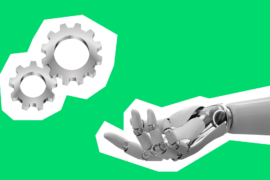The market might turn into a battlefield for every single customer when you don’t use new tools and approaches to ecommerce business. The strategy of working with customers is changing, and the way you worked two years ago might no longer be relevant. To be competitive, you have to stay up-to-date on new technologies and use them in your business.
Since its debut in 2023, ChatGPT has been changing the digital world. E-commerce is not an exception and has started using artificial intelligence as an excellent helper.
In this post, we’ll look at how ChatGPT can be used on your e-commerce website and how its integration can help you grow your business, convert more customers, and improve staff performance.
We’ve gathered the most recent information on how AI may be implemented into your project, step by step.
Contents
- What can ChatGPT integrate with?
- Can I integrate ChatGPT with my website?
- How to integrate AI into e-commerce?
- How is ChatGPT implemented by retailers?
- 10 best e-commerce integrations
- Conclusion
If you think you need a ChatGPT solution for your project, the Rubyroid Labs development team can help!
With our deep experience in project development across various industries, from automotive to e-commerce, we are perfectly equipped to integrate this AI tool into your idea.
Find it interesting? Then get in touch with us, and we’ll discuss how we can make your project shine.
What can ChatGPT integrate with?
When launched in November 2022, ChatGPT quickly became popular, attracting 1 million users in just 5 days and over 100 million within two months. The OpenAI chatbot has moved beyond being a curiosity. Now it is an active player in the global market, including the e-commerce sector.
Businesses are integrating ChatGPT as it is effective in various spheres and systems, including web platforms, messengers, CRM systems, and other infrastructure.
Why? The top AI’s feature is its ability to understand and respond to human language in a natural way. And in e-commerce, it’s an excellent way to improve the quality of customer service and enhance the effectiveness of marketing techniques. The AI can understand queries, analyze data, classify it into segments, and generate ideas.
In fact, the integration of ChatGPT into web stores has the potential to simplify lives:
- The customers enjoy great service and are offered products according to their interests.
- Businesses benefit from increased customer loyalty and enhanced profit margins.
Let’s see in detail where ChatGPT can be used as part of the e-commerce system.
CRM Systems
Customer relationship management (CRM) systems are at the heart of multiple e-commerce operations.
A chatbot can send follow-up emails, make targeted product suggestions, and even answer basic questions from customers, using CRM data.
When you integrate ChatGPT into your CRM, you will be able to provide a more customer-centric approach.
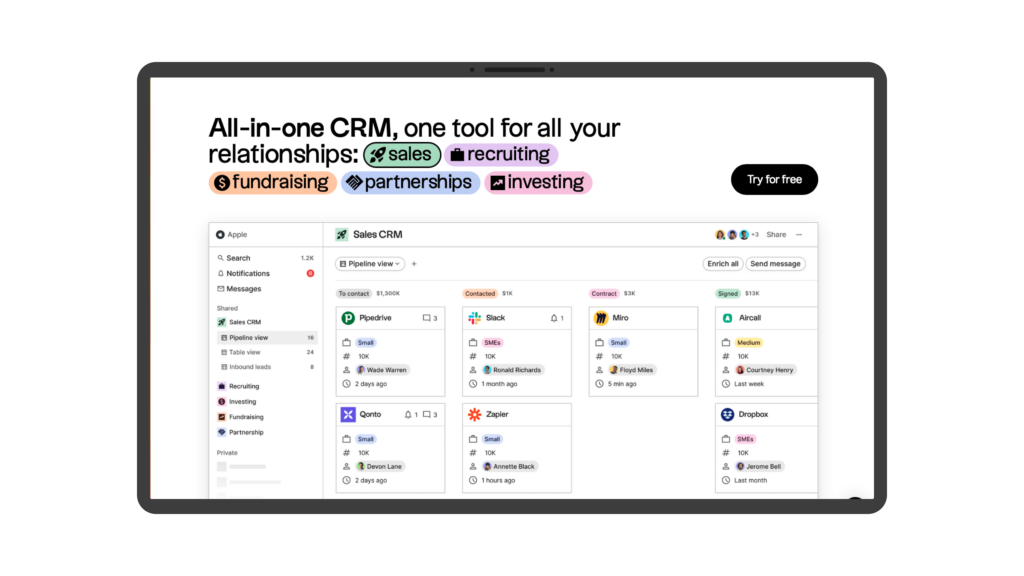
Example: Folk, all-in-one AI-based CRM.
Benefits: The built-in AI syncs and keeps all data in one place, helping with personalized mail and follow-up creation and tracking the results.
E-commerce Platforms
Whatever platform you might be using—Shopify, Magento, WooCommerce, or any other e-commerce platform—ChatGPT fits any of them and can improve the quality of your service. With its help, you can offer 24/7 customer support, manage orders, and provide individualized shopping experiences directly through the chatbot.
This level of care can automate the customer service routine and, in turn, make your online business stand out from competitors, making it a popular choice for users.
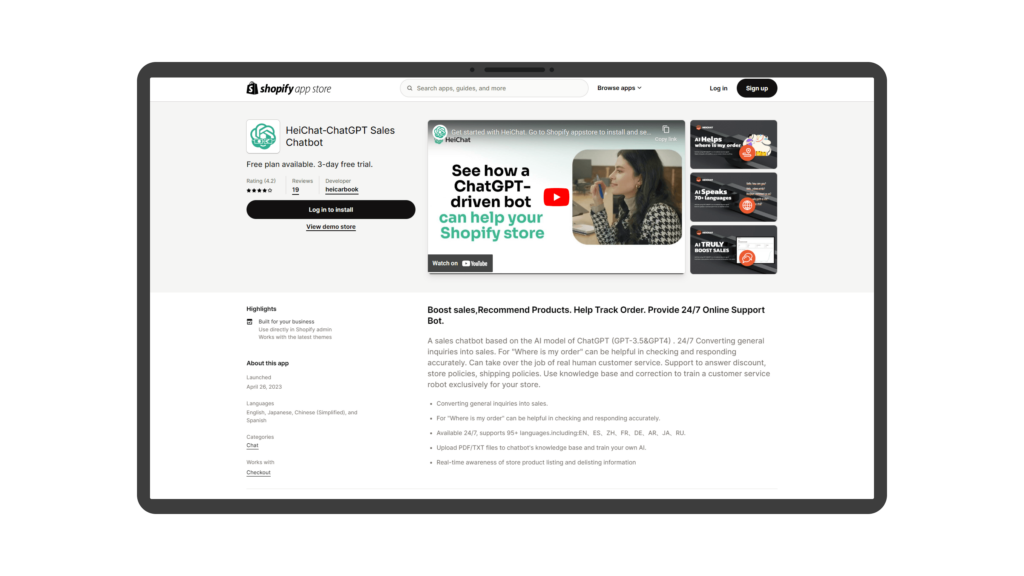
Example: HeiChat-ChatGPT sales chatbot by Shopify based on ChatGPT 3.5 and ChatGPT 4.
Benefits: The bot deals with the following duties:
- 24/7, converting simple queries into sales.
- Checking and controlling 24/7 “Where is my order” inquiries and others, including shipping, discount or store policies.
- Supporting 95+ languages, including: English, Spanish, French, German, Japanese, and Argentine.
- Store product listing control in real-time.
Social Media and Messaging Apps
With messengers like Facebook Messenger, WhatsApp, and Instagram, potential clients prefer chatting over speaking by phone. Integrating ChatGPT into these platforms can help you meet the following business needs:
– Increase the speed of replies to customer queries and improve customer retention;
– Engage potential clients with the content based on their interests;
– Even process orders straight through chat.
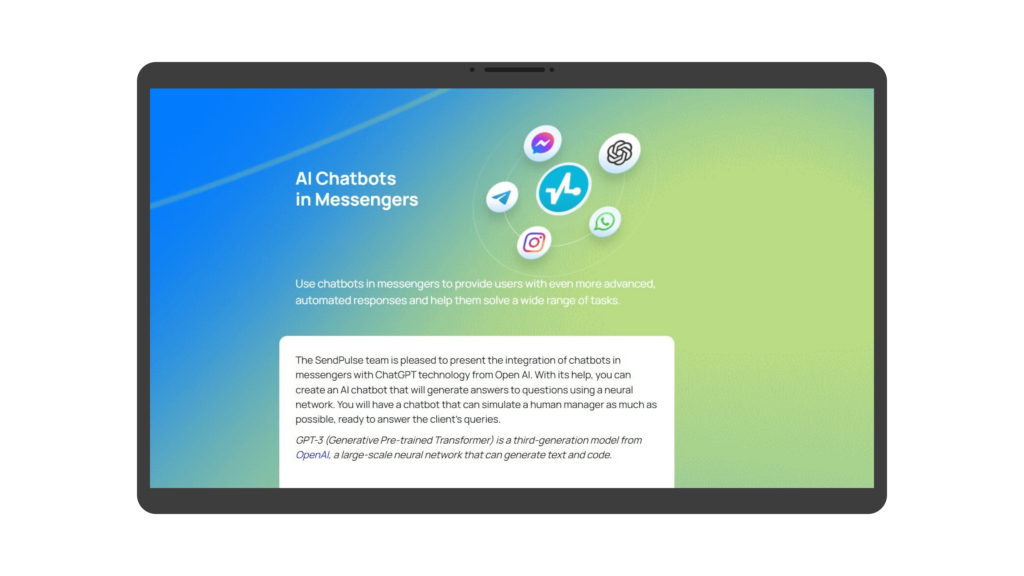
Example: SendPulse chatbot integration, powered by OpenAI, allows you to create a chatbot for automating conversations with customers across all popular messengers, including Telegram, Facebook Messenger, Instagram, and WhatsApp.
Benefits:
- The bot can be used for general communication with customers and can react to triggers such as connecting a manager, using a payment system, or making a clear response to a question.
- Understanding textual instructions regarding the topics to discuss with customers.
- Automatically pausing conversations with customers when a manager joins the chat.
Analytics Tools
Integrating AI with Google Analytics provides you with deeper insights from customer interactions with just a few prompts. You’ll easily discover trends, measure the effectiveness of your marketing efforts, and make data-driven decisions to improve your business.
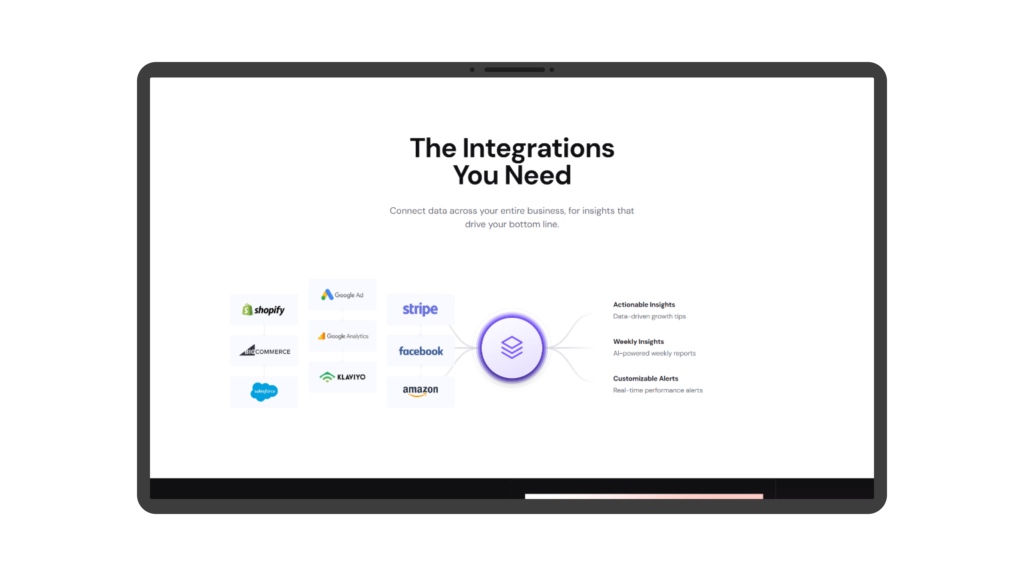
Example: XO Analytics is an AI-based analytics platform tailored for Shopify businesses. The platform integrates and analyzes data from various applications involved in business operations, including Google Analytics, Stripe, Shopify, Salesforce, Facebook, and more.
Benefits: The platform’s key advantages include:
- Aggregating data from multiple sources and saving time on information retrieval.
- Analyzing, comparing, and reporting data for a clearer understanding of business dynamics.
- Identifying underperforming products and recommending optimization strategies to enhance marketing and sales.
- Providing personalized insights into sales data in real time, offering fresh perspectives for improvement.
Payment Gateways
The bot can guide clients through the payment process, answer security questions, and provide rapid transaction confirmation, increasing confidence and satisfaction. Integrating ChatGPT with payment gateways and systems makes the checkout process faster and more user-friendly.
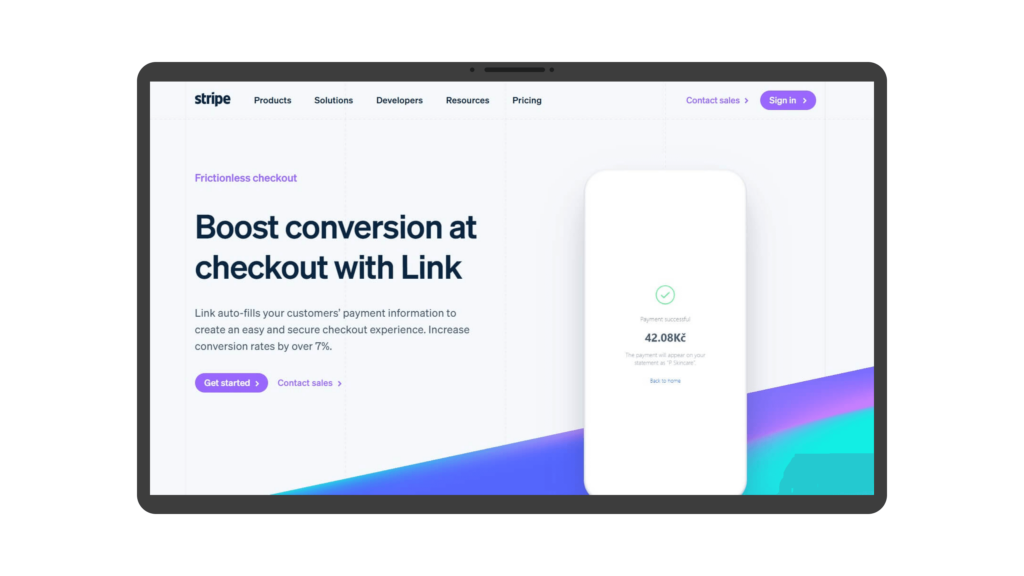
Example: Stripe collaborates with OpenAI on improving its products.
Benefits: With ChatGPT, Stripe Link customers can pay 40% faster by automatically filling in their saved payment information, enabling a quicker checkout process.
Email Marketing Platforms
ChatGPT can help you automate and personalize email messages.
Using the chatbot, you can create emails based on segments of your audience, considering their behaviors and preferences. Moreover, AI can suggest points of growth in your marketing campaign to make it more effective.
All you need to do is check the content and ask the bot to refine it.
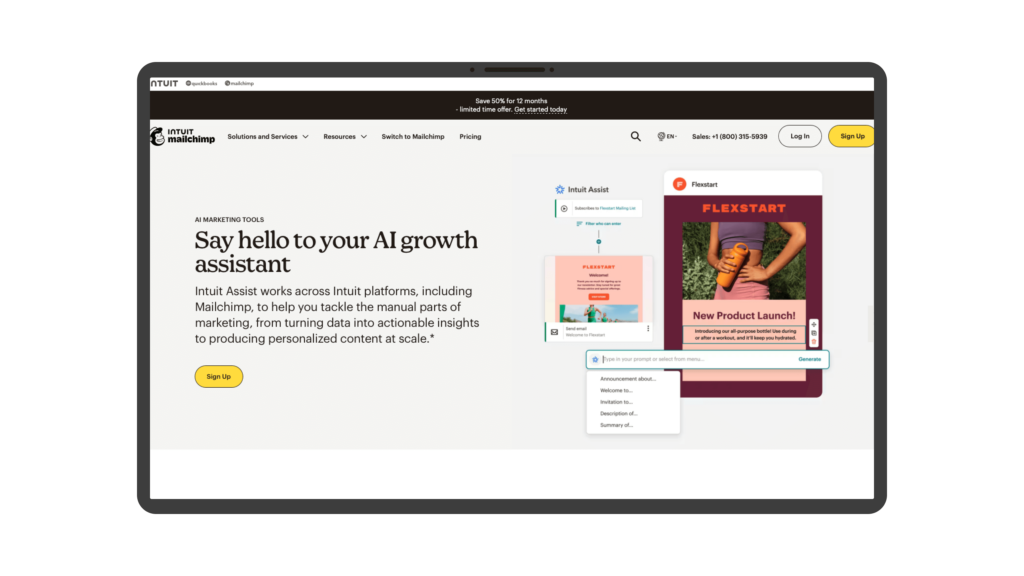
Example: Mailchimp Intuit Assist, powered by AI.
Benefits: The AI assistant can take on monotonous tasks and help with the following:
- Greeting new contacts, recovering abandoned carts, and re-engaging lost clients.
- Generating content for emails and copywriting.
- Analyzing campaigns and recommending ways of improvement.
As you see, the possibilities of ChatGPT in ecommerce are wide. It’s a great tool to significantly streamline operations and offer unparalleled service and personalized shopping experiences.
Can I integrate ChatGPT with my website?
“You can integrate ChatGPT’s with any website or web application. Customize the AI to fit your needs in content creation, analysis, or product design, and watch your operational efficiency double. It’s important to strategically position this AI tool, so think carefully about which areas of your website you want to enhance,” says Pavel Pershko, VP of Engineering at Rubyroid Labs.
Whether you’re owning an e-commerce platform, a blog, or a corporate site, ChatGPT’s versatility makes it a perfect fit for applications of all sizes and types of platforms.
Let’s shift gears from tech to tactics and outline where ChatGPT can be effective on your website:
Homepage: It is the first page where the user gets their first impression and decides whether to stay or close the page. So, ChatGPT integration here means it can warmly welcome visitors, provide help, and guide a shopper to the ideal purchase. It also considers the user’s preferences and offers personalized options.
Product Web Page: ChatGPT can act as a digital sales guide, answer product inquiries, and even offer tailored shopping advice. The AI tool can also maintain the customer’s interest in making a purchase and provide featured products.
Contact Page: On this page, a chatbot offers quick assistance, saving consumers time compared to emailing or contacting customer support.
Support Page: The AI tool is the best candidate for 24-hour customer support. The automated system understands the standard queries from customers, can learn and answer FAQ questions, and even provides solutions for problems that appear. This ability of ChatGPT to do the routine work allows human agents to focus on more sophisticated issues with customers.
Checkout Page: ChatGPT can help decrease cart abandonment by responding quickly to issues or misunderstandings throughout the checkout process.
Integration of ChatGPT into your website will make it more interactive and focused on the needs of potential customers. The users will obtain a memorable customer-centric experience that will make them return again and again.
Seeking to make your website smarter and more interactive with ChatGPT? Our dedicated development team is ready to improve your web app with this smart technology. Check out how we can work on your project on our service page for ChatGPT integration.
How to integrate AI into E-commerce?
By integrating ChatGPT with e-commerce, you give yourself a path to commercial success. The use of a chatbot doesn’t mean that it will replace the human touch. It’s rather about improving the employees’ work with more efficiency and accuracy. Artificial intelligence may relieve specialists of monotonous, time-consuming tasks, increase their productivity, and free up time for more essential duties.
With careful planning and smart implementation, a ChatGPT solution may become the foundation of your e-commerce innovation.
Let’s see what integration steps you need to take to expand your ecommerce business.
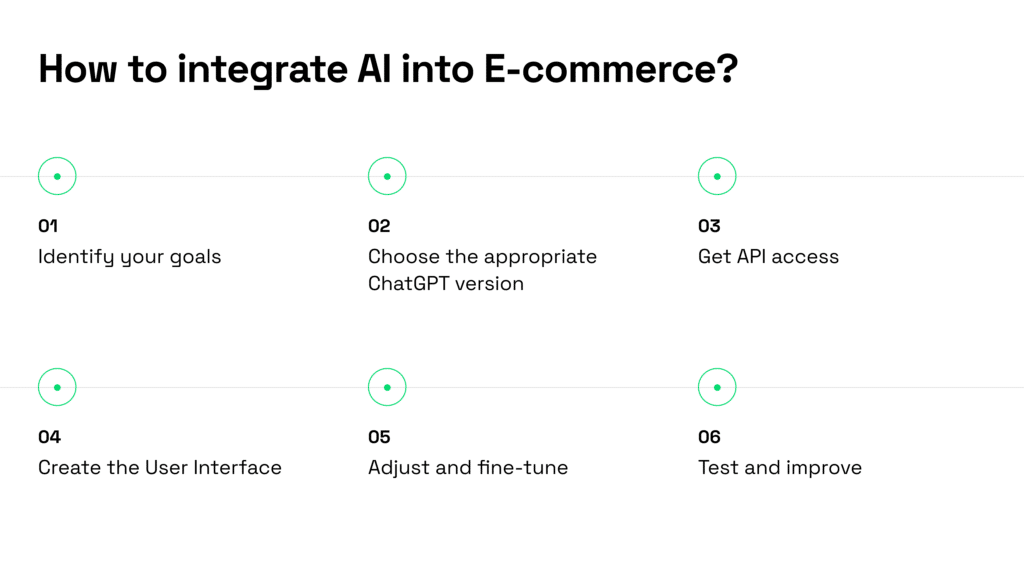
1. Identify Your Goals
Before starting the integration process, the first thing you need to do is establish clear goals for what you want to accomplish. Define the tasks you think ChatGPT will take on, such as boosting customer service, offering insightful product recommendations, or smoothly navigating users across your site.
When you have a well-defined set of goals, you understand what to expect and whether it is possible to realize them.
2. Choose the appropriate ChatGPT version
The OpenAI platform supports a range of ChatGPT tools, each with its own unique set of strengths. Choose one according to your business objectives and the complexity of the interactions you anticipate on your website.
3. Get API access
The process of integrating ChatGPT into your web page starts with getting API access from the OpenAI platform. At this stage, it is critical to partner with a software development company to have the API fully integrated into the framework of your website’s backend. This integration step is the basis for a safe and efficient connection between your website and the ChatGPT model.
4. Create the User Interface
An interactive and engaging user interface will attract customers to use the chat and ask for information. Think of the conversation widgets, select conversation flows, and use your brand’s elements to elevate the user experience.
5. Adjust and Fine-tune
Work with your AI development team to adjust ChatGPT prompts and contexts specific to your business. It’s also important to regularly update the ChatGPT model and implement necessary adjustments with relevant data. This will ensure the AI tool remains fine-tuned and responsive to changing customer requests.
6. Test and improve
At this final stage, you have to test the implementation of ChatGPT to find any defects and review its responses in a variety of scenarios to ensure they are valid and relevant. If you notice any unexpected results or weird behaviors, cooperate closely with your testing team to resolve them for a smooth rollout.
All these steps of integration are vital for the successful implementation of ChatGPT on your website.
How is ChatGPT implemented by retailers?
According to PwC’s 2023 AI business predictions survey, over 73 percent of US companies are using artificial intelligence in various aspects of their operations. By 2024, AI is expected to fundamentally change the way businesses operate.
Retail and e-commerce are sectors that are developing rapidly, with intense competition. Using ChatGPT is an excellent way to:
- automate fully or partially repetitive tasks related to responding to customer inquiries;
- leverage customer data that was previously overlooked due to time-consuming tasks and invent new business strategies.
Let’s delve into more detail on how ChatGPT is utilized in retail.
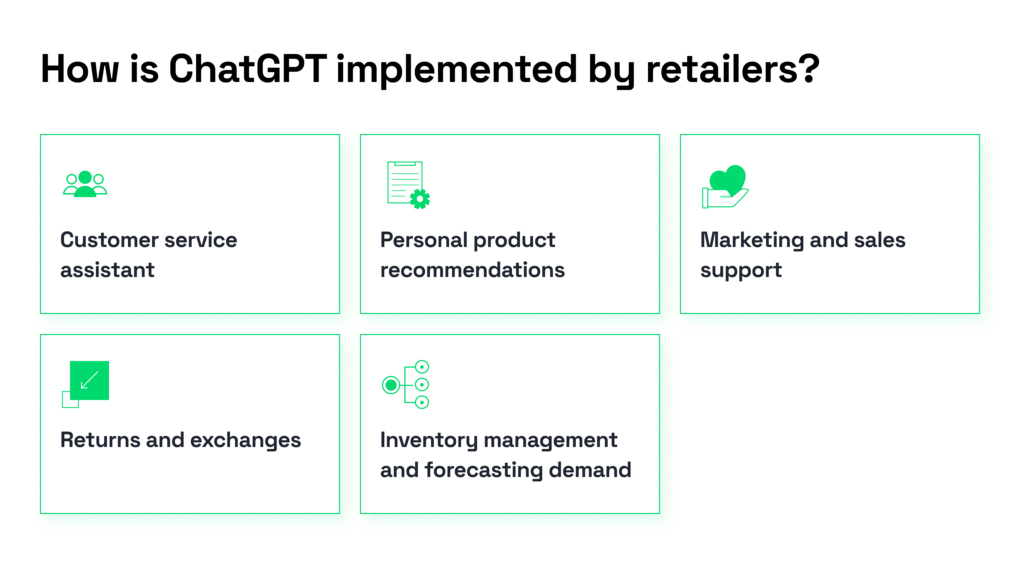
Customer Service Assistant
In addition to ChatGPT’s capability to offer 24/7 support and personalized advice to customers in real-time, the AI chatbot can also:
- Easily switch among 50 different languages to consult customers worldwide.
- Search for and provide information about orders and their delivery status.
Personal product recommendations
The OpenAI tool can provide personalized product recommendations for users, taking into consideration their purchasing behavior—browsing history within the website, size, color, and style of chosen products, and upcoming events. And this individual approach is the exact service that the customers are seeking to receive. This is what will make them return for further purchases.
Marketing and Sales Support
The AI tool can become an essential player in marketing and sales teams, speeding up processes such as:
- Creating and sending personalized marketing and promotional emails and messages to customers based on their interests.
- Assist in brainstorming ideas for future marketing campaigns and business development using real customer data.
- Generating content, including product descriptions, blog posts, and social media texts.
- Analyzing, summarizing, and reporting on current sales status.
- Providing automated follow-up or welcome messages post-sale.
Returns and Exchanges
ChatGPT may be trained to answer how to start a return or exchange, what products can be returned, and how long it takes to get a refund.
The bot can guide consumers through the return and exchange procedure, offering guidance and resolving any difficulties that arise. It allows merchants to deliver an automated and smooth client experience, enabling customer support representatives to focus on more important issues.
Inventory Management and Forecasting Demand
ChatGPT can find possible bottlenecks in the supply chain, thereby boosting its efficiency and cutting the costs involved in resolving issues. Another additional AI’s skill is its ability to forecast demand for future products, assess the degree of interest, and devise marketing and sales strategies for their promotion.
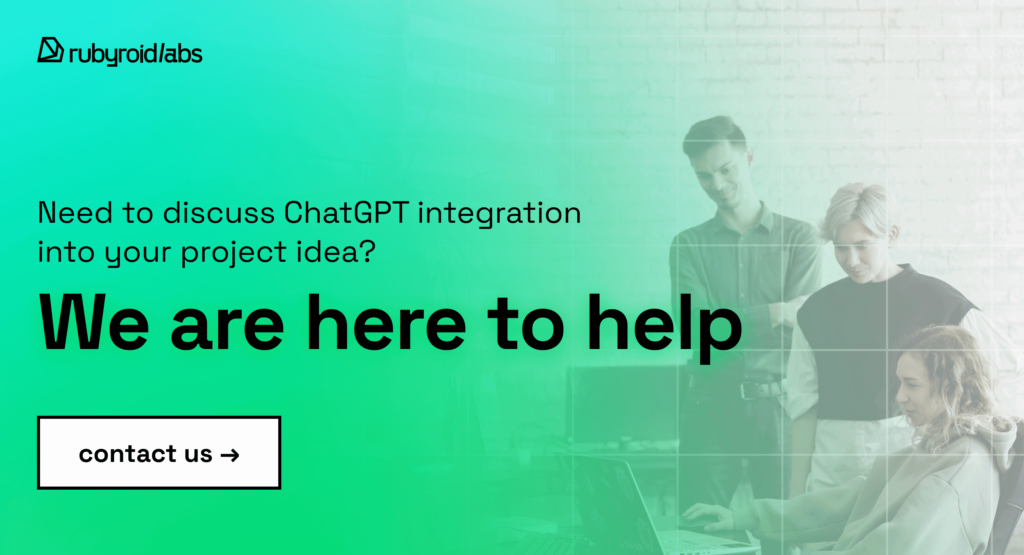
10 best e-commerce integrations
An AI tool integrated into your e-commerce platform acts as an additional pair of hands, offering sophisticated personalization to customers. Once you know where to implement it and how to tune it, your customers won’t see the difference between whether a manager serves them or an automated system.
We have prepared another set of examples showcasing how ChatGPT for e-commerce can be ideally utilized.
Customer Support via Live Chat
Example: Integrating ChatGPT with Zendesk Chat on your e-commerce site to provide instant responses to customer inquiries about product details, shipping policies, and order status, improving response times and customer satisfaction.
Personalized Product Recommendations
Example: A fashion retailer uses ChatGPT integrated with Shopify to analyze customer browsing behavior and purchase history, offering personalized outfit recommendations, thereby increasing average order value and customer loyalty.
Automated Email Customer Service
Example: An online electronics store integrates ChatGPT with Mailchimp to automatically respond to customer emails regarding warranty information and technical support, streamlining customer service operations.
Engagement on Social Media Platforms
Example: A beauty brand uses ChatGPT integrated with Hootsuite to manage customer queries and engage users with personalized skincare advice on platforms like Instagram and Facebook, enhancing brand presence and customer interaction.
Content Creation for SEO and Marketing
Example: A home decor online shop leverages ChatGPT with WordPress to generate SEO-friendly blog posts about interior design trends and product usage tips, driving organic traffic and engaging potential customers.
Voice-Activated Shopping
Example: An online grocery integrates ChatGPT with Amazon Alexa, enabling customers to add items to their shopping cart and place orders through voice commands, offering a convenient and hands-free shopping experience.
Dynamic FAQs and Help Centers
Example: A travel gear e-commerce platform uses ChatGPT to power its FAQ section, dynamically updating travel tips and product care instructions based on the most common queries, ensuring that content remains helpful and up-to-date.
Order Processing and Inventory Alerts
Example: A boutique wine shop integrates ChatGPT with its WooCommerce platform to automate notifications about low stock to customers and re-order alerts to suppliers, optimizing inventory management and reducing stockouts.
Collecting and Analyzing Customer Feedback
Example: A fitness equipment retailer uses ChatGPT integrated with SurveyMonkey to automate the collection and analysis of customer feedback on product satisfaction, using insights to improve product offerings and customer service.
Secure, Chat-Based Payments
Example: A luxury watch online store integrates ChatGPT with Stripe to process payments directly within the chat interface, providing a seamless and secure checkout experience that boosts conversion rates.
Conclusion
The opportunities that ChatGPT offers for e-commerce are inspiring. It’s a powerful assistant for e-commerce businesses.
Thanks to its ability to understand natural language input, it is easy to teach this powerful language model to do monotonous parts of the work. AI does its job without skipping vital details while providing excellent customer service at the same time.
You can integrate the ChatGPT tool into your website and hit two targets with one shot thanks to automation:
- Boost the quality of customer service by attracting people with attentiveness to their needs and preferences.
- Unload staff from routine work, prevent professional burnout, and leverage the space for more interesting tasks oriented toward business growth.
Get in touch with us, and we’ll discuss the ways to use ChatGPT and the profits you can gain after integrating it into your web application.



